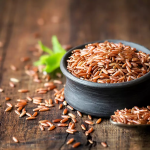If you have diabetes, you should avoid starchy foods like rice. What if we told you there was a way for you to enjoy rice and not cause your insulin levels to spike? Learn more about resistant starch and diabetes.
The consumption of carbohydrates is a controversial topic, especially for people with diabetes. When diagnosed with diabetes, you’re advised to avoid rice, potatoes, and all starches. Is it best for diabetics not to consume carbs at all? The idea is to consume around half our calories as carbs. There is no evidence to support a specific amount. When consuming carbohydrates, it is important to consider both the quantity and the quality. This is especially true for diabetics. Resistant starch is one such carbohydrate.
It is starch resistant to gastric acids and takes a long time to be digested. They resist digestion in the small intestine or stomach and instead enter the large intestine (usually the colon), where the local bacteria digest them. In this way, they work similarly to dietary fibre.
Glucose and starch
The body can absorb glucose directly from the intestine. Starch is a massive substance that is made up of two or more sugars. Before absorption, they must be broken into smaller molecules in the digestive tract. This property means that starch takes a while to digest, unlike glucose. It can help delay the insulin spike or postprandial hypoglycemia for diabetics.
Some foods naturally contain resistant starches. There are ways to prepare, cook and store our food in a way that makes it starch-resistant.
The effect of resistant starch on blood glucose levels
How does resistant starch help control glucose levels? Does it allow diabetics to eat rice? Doesn’t this mean that you can’t eat rice from the moment you get diagnosed with diabetes onwards? Find out!
Because of its complex structure, resistant starch delays the emptying time in the stomach, preventing insulin spikes and postprandial hypoglycemia. Because resistant starch is low in glycemic index, it can replace conventional starches such as maize, wheat and rice. RS contributes a portion of the carbohydrate in a meal but not to the available CHO, causing a dilution of energy.
RS also reduces the glycemic reaction to a subsequent meal. This phenomenon is known as the “second meal effect”, and it’s important when managing diabetes.
June Zhou et al. The association between resistant starch, GIP and GLP and their regulation was studied. These hormones regulate the amount of insulin secreted from the pancreas. They are produced by enteroendocrine cells of the GI tract. Researchers have shown that chronic consumption can increase GLP-1 synthesis. This increases insulin sensitivity and improves glycemic control in diabetics.
Probiotic effects of resistant starch have also been demonstrated. When they reach the colon (good gut bacteria), the resident bacteria ferment them and liberate SCFAs (Short Chain Fatty Acids). These SCFAs provide food for healthy bacteria, which helps them grow.
Researchers found that participants with insulin resistance who consumed 66 grams of resistant starch type 2 per day improved insulin sensitivity. Their ratio of “good” bowel bacteria increased as well.
How can we increase the amount of resistant starch in our food?
You can add resistant starch to foods in a few ways. It depends on how the food was prepared, whether cooked or reheated.
Retrogradation is one such method. It involves cooking the food, cooling it down and then symmetrically re-crystallizing the starch molecules. By cooking rice with water, for example, starch molecules will gelatinize. Rice grains swell by absorbing the water. The water molecules leak out, and the starch molecules rearrange into a crystal structure. They can no longer break down by enzymes and thus escape digestion.
You can retrograde them by simply cooling and cooking starchy food like rice, potatoes, beans, cereals, peas, etc..
Diabetics can enjoy rice without worrying about their blood sugar levels spiking. Image courtesy: Adobe Stock
Takeaway
The resistant starch type of carbohydrate does not digest in our entire GI tract. Retrograding starchy foods (cooking and cooling at low temperatures) will reduce their digestibility in the GI tract. This reduces postprandial high blood sugar and insulin spikes. It also improves insulin sensitivity, which is important for managing diabetes. This modified rice allows diabetics to eat it without stress. The consumption of Resistant Starch was positively correlated with the growth of a healthy gut microbiome among individuals with Type 2 Diabetes Mellitus.





